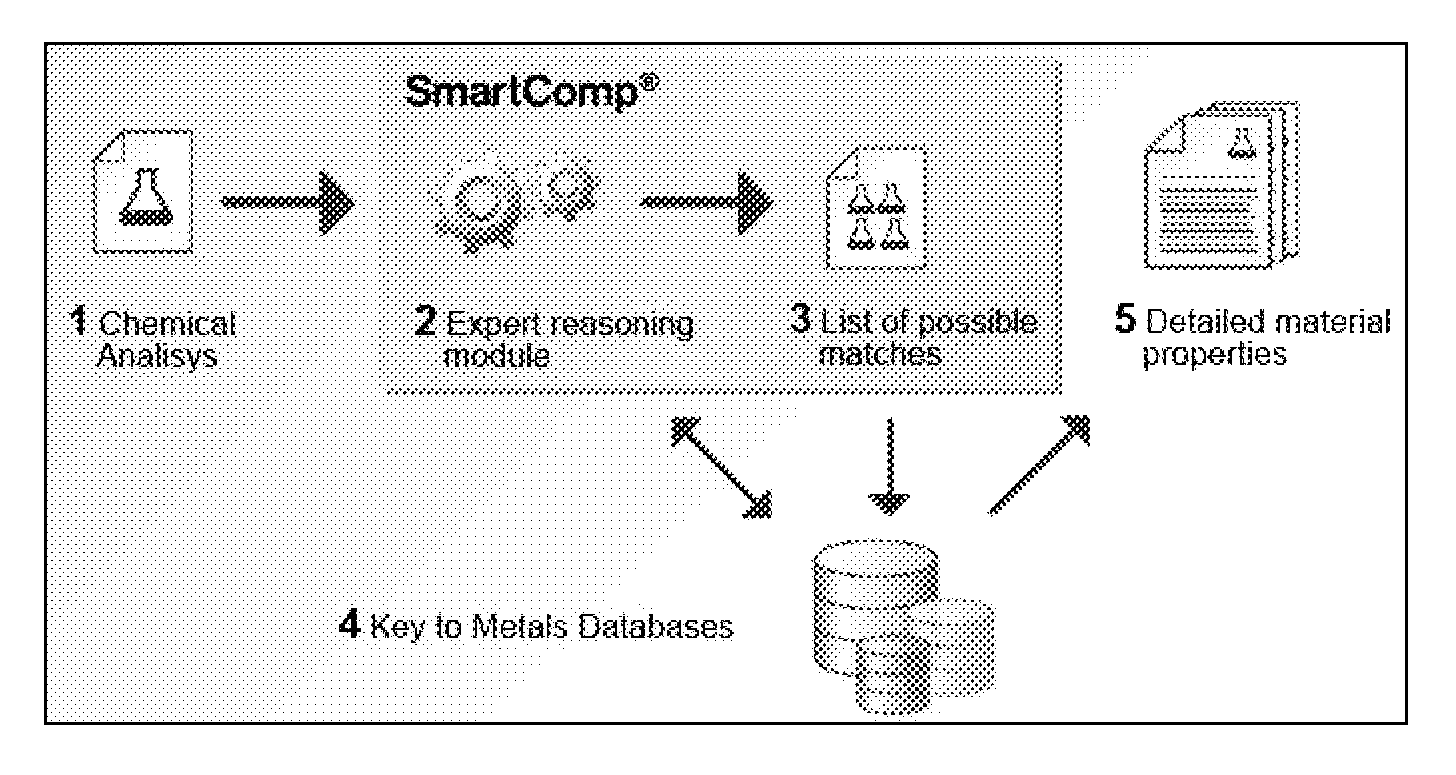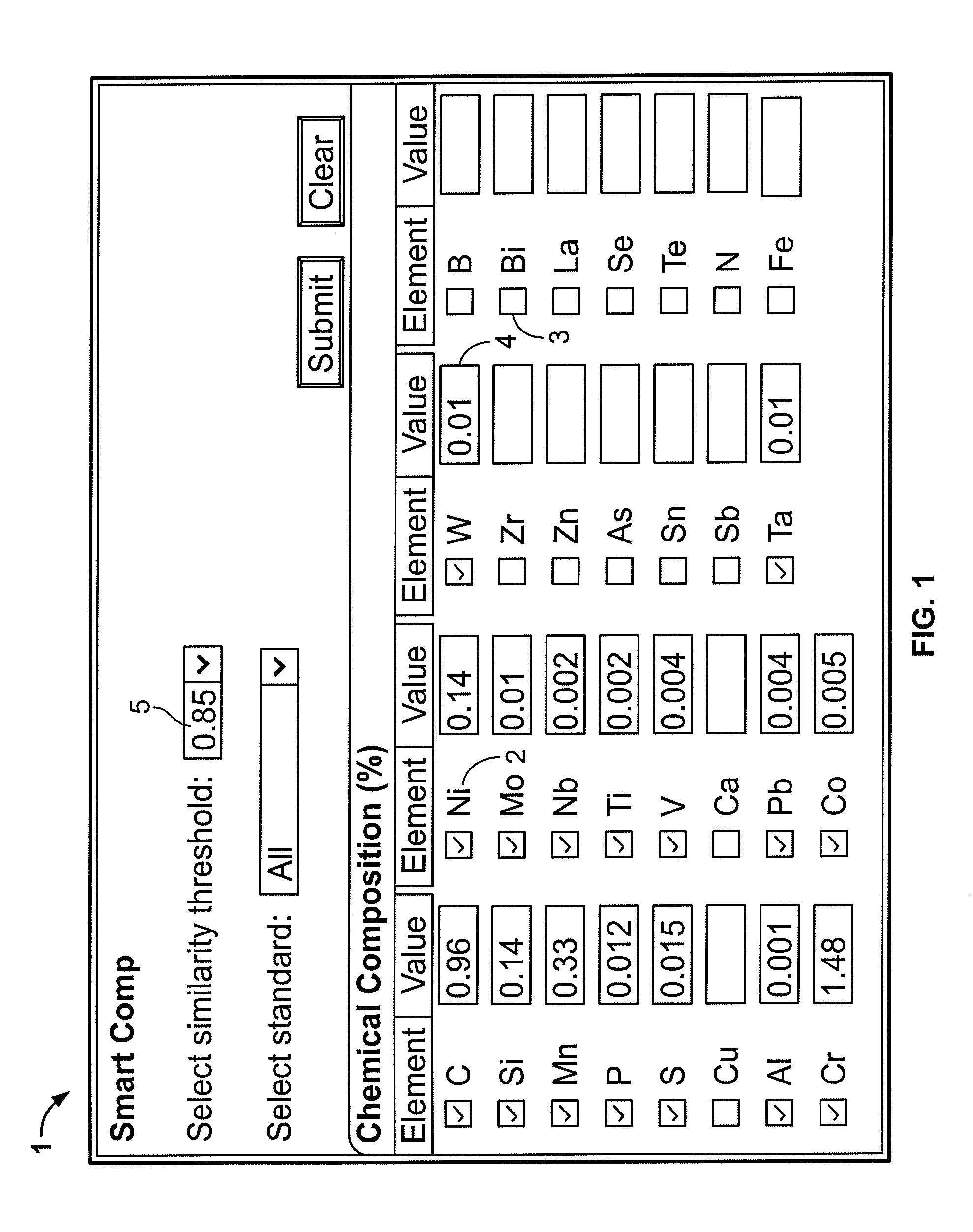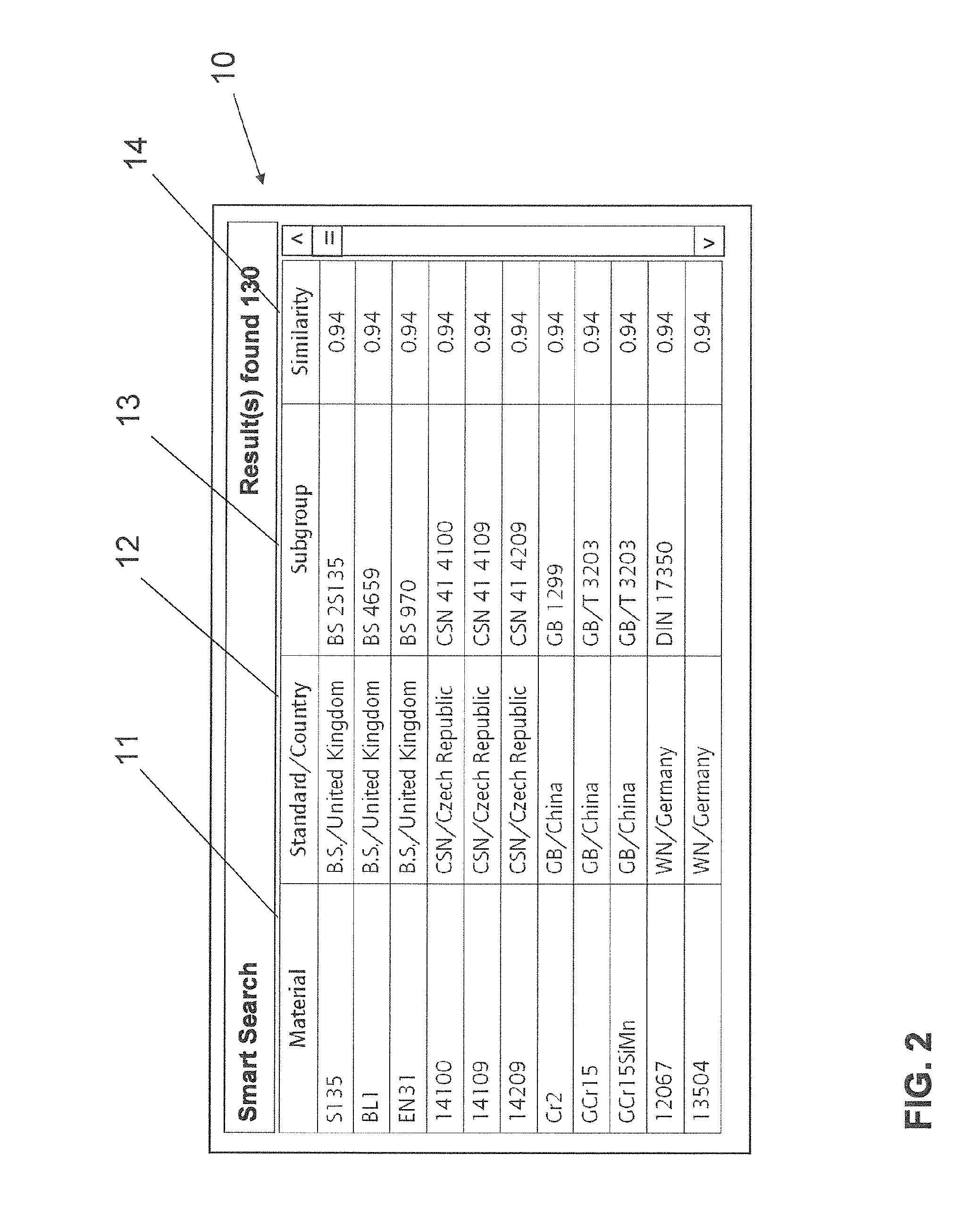Method and system to identify metal alloys
a metal alloy and metal alloy technology, applied in the field of metal alloy identification, can solve the problems of not being able to determine the original supplier, not being able to identify the exact source of the metal, and still not being able to safely determine the material used
- Summary
- Abstract
- Description
- Claims
- Application Information
AI Technical Summary
Benefits of technology
Problems solved by technology
Method used
Image
Examples
Embodiment Construction
[0028]A method according to the present application is suitable to search similar, respectively equivalent metals (herein expressions for metals and metal alloys are in general treated as equivalent) from a comprehensive database containing information about metals (e.g. like Key-to-Metals™) based on specific test results by comparing information about chemical compositions and / or mechanical properties, or partial information thereof. A method applied is designed to use a general pattern when comparing chemical compositions and properties of two metals remotely similar to the approach of a human expert. In contrast to a human expert, the disclosed method is more accurate and therefore reliable due to a standardized procedure which is based on measured values.
[0029]Depending on the field of application, the method may be applied to:[0030]identify an unknown metal when its chemical analysis is known;[0031]assessing conformity of tested metals with other standard- or proprietary metals...
PUM
| Property | Measurement | Unit |
|---|---|---|
| chemical composition | aaaaa | aaaaa |
| composition | aaaaa | aaaaa |
| threshold | aaaaa | aaaaa |
Abstract
Description
Claims
Application Information
 Login to View More
Login to View More - R&D
- Intellectual Property
- Life Sciences
- Materials
- Tech Scout
- Unparalleled Data Quality
- Higher Quality Content
- 60% Fewer Hallucinations
Browse by: Latest US Patents, China's latest patents, Technical Efficacy Thesaurus, Application Domain, Technology Topic, Popular Technical Reports.
© 2025 PatSnap. All rights reserved.Legal|Privacy policy|Modern Slavery Act Transparency Statement|Sitemap|About US| Contact US: help@patsnap.com



